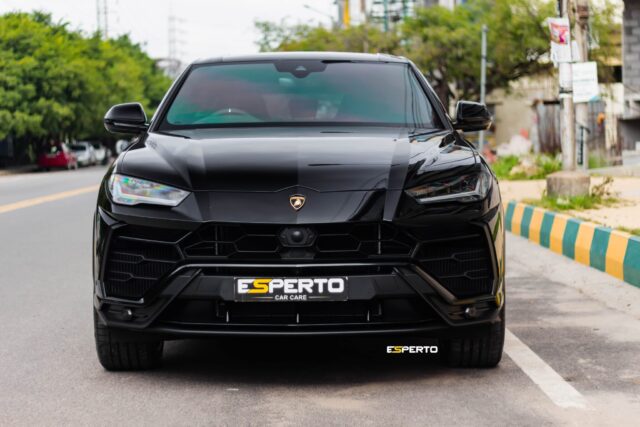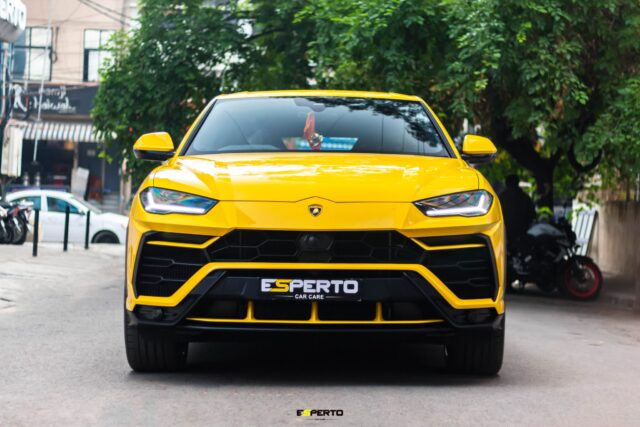Paint Protection Film (PPF) can turn yellow over time due to prolonged UV exposure, pollutants, and inadequate maintenance. Yellowing is recognizable by a cloudy appearance or subtle colour shifts. Prevention includes using PPFs with UV inhibitors and regular maintenance. Yellowed PPF can be partly restored with professional-grade cleaners and detailing services. Thorough evaluations on maintaining aesthetics and protection guide decisions for fixing or replacing a yellowed film. More insights are available on prevention and restoration.
Key Takeaways
- PPF can turn yellow due to UV exposure, pollutants, and poor-quality materials lacking UV inhibitors.
- Regular inspections help identify early signs of yellowing and maintain the film’s appearance.
- High-quality PPF with UV inhibitors and proper maintenance prevents yellowing and extends film life.
- Professional-grade cleaning products and polishing compounds can help restore clarity to yellowed PPF.
- Evaluate the cost-effectiveness of restoring versus replacing the PPF based on its protection efficacy and aesthetic impact.
Why Does PPF Turn Yellow on a Car Over Time?
Paint Protection Film (PPF) on cars is susceptible to yellowing over time primarily due to prolonged UV exposure, which can compromise the film’s clarity.
Ultraviolet rays initiate chemical reactions within the film’s polymers, leading to discolouration, while certain coatings applied to PPF may exacerbate this effect.
To mitigate yellowing, it is essential to choose high-quality films and coatings specifically designed to resist UV degradation.
What Causes PPF to Turn Yellow or Yellowish in Sunlight?
Exposure to ultraviolet (UV) rays is one of the primary factors that contribute to the yellowing of paint protection film (PPF) on cars.
When PPF is subjected to direct sunlight, UV radiation can cause chemical reactions within the film, leading to discolouration over time. This is a significant cause of PPF turning yellow.
Opting for high-quality PPF that includes UV inhibitors can help prevent yellowing by minimizing the harmful effects of these rays.
It is essential for car owners to regularly inspect their PPF for early signs of discolouration, as early intervention can help protect your car paint.
In addition, parking in shaded areas or using covers can further reduce exposure to UV radiation and preserve the film’s clarity.
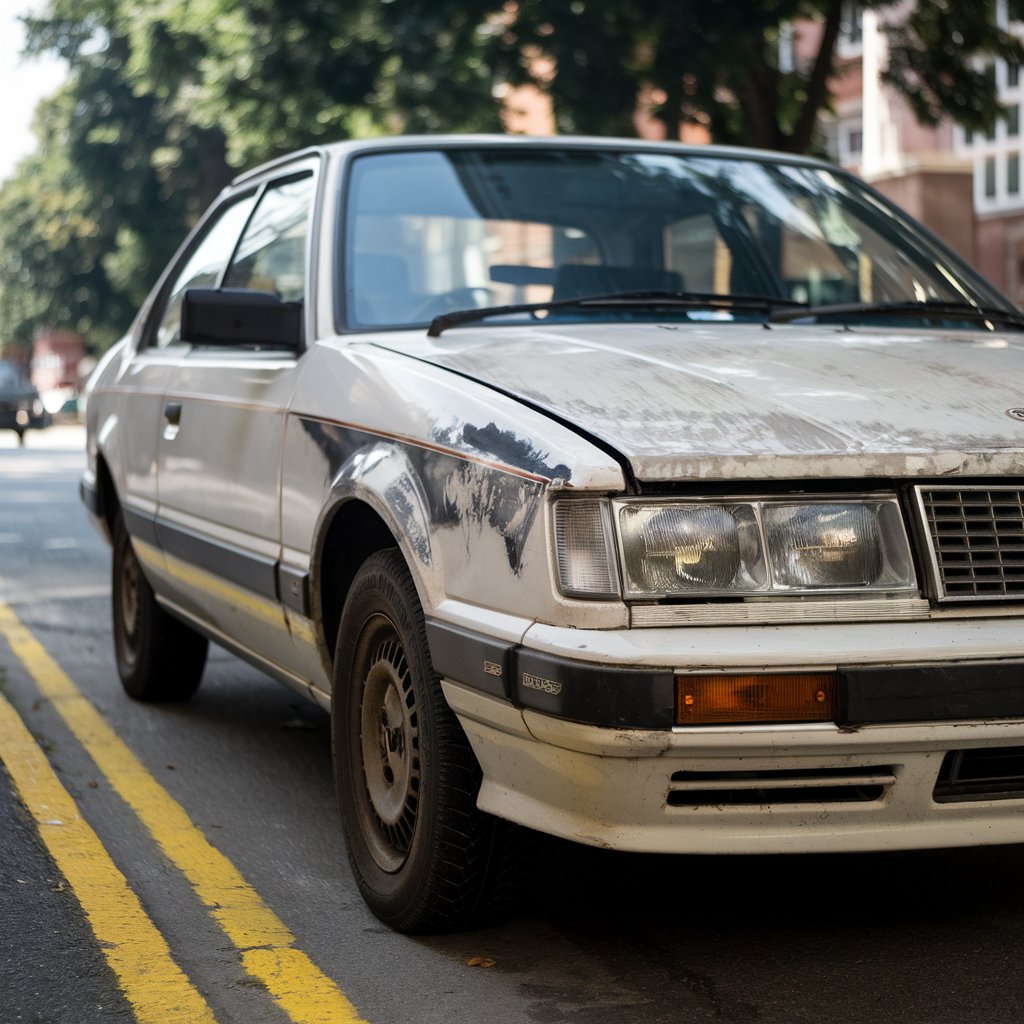
How Does a Paint Protection Film Turn Yellow Due to UV Exposure?
Why does paint protection film (PPF) succumb to yellowing under UV exposure?
The phenomenon where PPF turns yellow over time is largely attributed to prolonged exposure to UV radiation. This exposure can degrade the film’s chemical structure, leading to discolouration.
The causes of PPF yellowing often include inadequate UV inhibitors within the film’s composition. High-quality PPF typically incorporates these inhibitors to protect your car’s paint and maintain PPF transparency.
However, inferior films may lack sufficient UV protection, accelerating yellowing. To effectively shield the car’s paint and prevent yellowing, investing in a high-quality paint protection film is essential.
Additionally, regular maintenance and protection from excessive sun exposure can further enhance the longevity and appearance of the PPF.
Is Your PPF Coating Contributing to Yellowing Issues on the Vehicle?
Could the PPF coating itself be a culprit behind the yellowing issues observed on vehicles over time? Indeed, the quality of the paint protection film plays an essential role.
Car owners often question, “Does PPF yellow?” The answer largely depends on the film’s composition. Lower-grade films are prone to degradation, causing the car protective film to yellow.
High-quality PPF, however, integrates UV inhibitors, helping to prevent PPF yellowing. Regular cleaning and maintenance are also vital in mitigating PPF yellowing.
Contaminants and environmental pollutants can accelerate the yellowing process if left unchecked. To protect your vehicle effectively, selecting a high-quality PPF and adhering to proper care protocols can greatly reduce the risk of the PPF turning yellow over time.
Can Paint Protection Film Yellowing Be Prevented with Coatings?
The application of specialized coatings can play a significant role in mitigating the yellowing of paint protection film (PPF) by providing an additional barrier against UV rays and environmental contaminants.
While not all coatings offer the same level of protection, selecting high-quality options specifically designed for PPF can enhance durability and maintain optical clarity.
These coatings work by minimizing surface oxidation and chemical degradation, thereby extending the lifespan and appearance of the film over time.
What’s the Role of PPF Coating in Preventing Yellowing?
While paint protection films (PPFs) serve as a barrier against environmental elements and physical damage, their role in preventing yellowing is multifaceted and depends on several factors. Car owners seeking to protect their vehicles must consider the life of PPF coatings and the potential for yellowing of PPF. High-quality PPFs, resistant to harsh chemicals and UV exposure, are among the best ways to prevent discolouration. Car owners need to have good maintenance practices in place.
| Factor | Impact on Yellowing | Recommendation |
|---|---|---|
| Quality of PPF | High-quality PPF reduces yellowing | Opt for premium PPF brands |
| UV Exposure | Increases yellowing risk | Park in shaded areas |
| Harsh Chemicals | Accelerates yellowing | Use pH-neutral cleaning products |
| Maintenance Practices | Affects the life of PPF | Regular cleaning and inspections |
These measures guarantee the prolonged efficacy of the car’s PPF.
Are There Any Coatings That Stop Paint Protection Film from Turning Yellow?
How effectively can additional coatings prevent paint protection films (PPFs) from yellowing? The application of a high-quality paint protection coating can greatly delay the process whereby a protective film turns yellowish. When a ceramic coating is applied over the PPF, it forms a barrier that helps prevent elements that cause the film to degrade over time.
This is an essential consideration for car paint protection, as it can extend the life of the film. However, the choice of coating is important; improper application or low-quality products may damage the film.
Although a protective film can still turn yellow over time, a properly applied, high-quality coating can mitigate this common issue, preserving the vehicle’s aesthetic integrity.
How Does Quality Coating Help Prevent PPF Yellowing Over Time?
When considering methods to prevent paint protection film (PPF) yellowing over time, a quality coating emerges as an essential factor. Utilizing a high-grade polyurethane coating, particularly Thermoplastic Polyurethane (TPU), guarantees superior car protection by minimizing UV exposure and adhesive deterioration. These are key contributors to PPF yellowing and various forms of damage.
| Quality Aspect | Benefit |
|---|---|
| Polyurethane Coating | Reduces UV exposure |
| TPU is the Best | Enhances durability of PPF material |
| Adhesive Strength | Prevents yellowing and damage |
Selecting the best ways to maintain the quality of the PPF includes regular maintenance and applying a protective coating. This approach not only preserves the aesthetic appeal but also extends the lifespan of the film, safeguarding the vehicle’s appearance.
How Can You Identify If a Paint Protection Film Turns Yellow?
Identifying yellowing in paint protection film (PPF) involves observing subtle colour changes that may initially appear as a faint discolouration on the surface.
Factors contributing to this phenomenon include exposure to UV light and inferior film quality, which can accelerate the yellowing process.
To distinguish whether the yellowing is due to the PPF or external contamination, one should examine if the discolouration is consistent across the film or localized to specific areas, suggesting potential contamination.
What Are the Early Signs That PPF Is Turning Yellow on a Car?
Why does paint protection film (PPF) sometimes exhibit yellowing? Several factors contribute to this issue, including exposure to UV rays, environmental contaminants, and using low-grade PPF materials.
Identifying early signs of PPF yellowing is essential to prevent further rust damage to your car’s appearance.
Look for these early indicators:
- Faint discolouration: Notice subtle changes in colour, particularly in areas with prolonged sun exposure.
- Uneven texture: Observe any changes in the film’s surface texture, which may indicate deterioration.
- Loss of clarity: A cloudy or hazy appearance suggests the film is turning yellow.
Car care tips include regular inspections and using high-quality films to avoid these issues.
Why Do Some Paint Protection Films Turn Yellow Faster Than Others?
While early signs of yellowing in paint protection film (PPF) provide crucial insight into potential issues, understanding why some films discolour more rapidly than others can guide better product selection and maintenance practices.
PPF yellowing can be influenced by the type of material used. For instance, PVC PPF is more prone to turning yellow compared to TPH PPF due to its chemical composition.
Environmental factors and improper maintenance, like failing to clean the film regularly, can also accelerate discolouration.
A high-quality PPF not only offers a robust layer of protection for the vehicle’s paint but also helps keep your car looking pristine.
Monitoring yellowing and other forms of degradation guarantees timely intervention and extends the lifespan of car PPF.
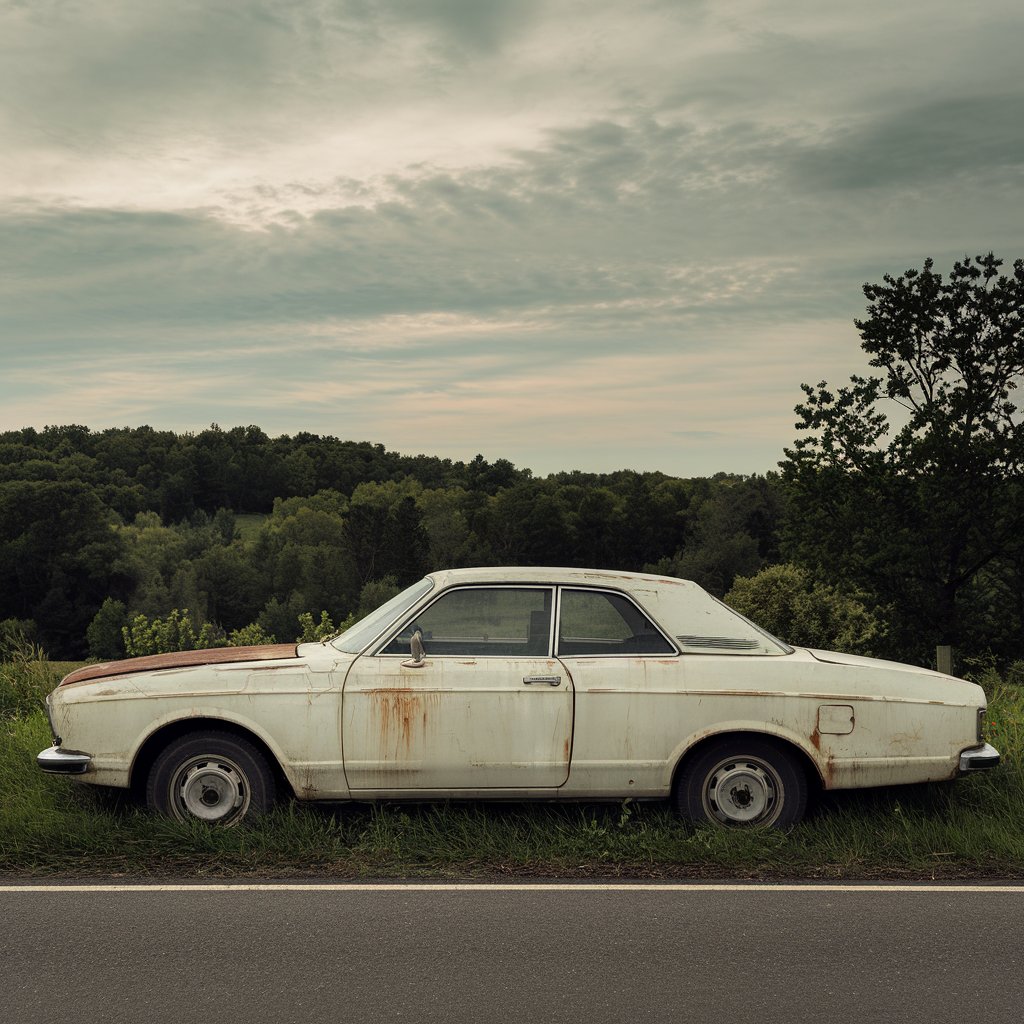
How Can You Tell If the Yellowish Tint Is Caused by PPF Coating or Contamination?
Determining whether a yellowish tint on a car’s surface is due to the paint protection film (PPF) coating itself or external contamination requires careful observation and analysis.
Car owners should first assess the primary causes of ppf yellowing. The paint protection film may discolour due to UV exposure, or contamination may result from pollutants and dirt accumulation.
To differentiate, examine if the yellowish tint is uniform, suggesting ppf coating issues, or sporadic, indicating contamination.
- A thorough car wash Helps identify if the yellowish tint persists, hinting at PPF degradation.
- Examine edges and seams: Yellowing at edges often suggests ppf coating failure.
- Professional inspection: Expert evaluation can pinpoint whether PPF yellowing or contamination is causing the car to look less pristine.
What Are the Best Ways to Prevent Paint Protection Film Yellowing?
To effectively prevent paint protection film (PPF) from yellowing, selecting an appropriate coating option is essential, as some coatings provide superior UV resistance and hydrophobic properties.
Regular maintenance, including gentle washing methods and avoiding harsh chemicals, is key to maintaining the long-term clarity and longevity of PPF.
Additionally, it is recommended to reapply protective coatings periodically, following manufacturer guidelines, to guarantee continued effectiveness against yellowing.
Which Coating Options Work Best to Prevent PPF From Turning Yellow?
How can one guarantee the longevity and clarity of paint protection film (PPF) without succumbing to unsightly yellowing? Selecting the right PPF coating is essential.
When applying paint protection film, car enthusiasts should prioritize coatings that resist UV damage, as this is a primary cause of PPF yellowing. The life of PPF coating can be extended by choosing products from a leader in the PPF industry which are specifically designed to help keep the film clear and vibrant.
To keep your car’s paint and PPF in peak condition, consider these options:
- Ceramic Coatings: Known for their hydrophobic properties and UV resistance.
- Self-Healing Films: Offer durability and clarity.
- UV-Resistant Coatings: Specifically designed to block harmful UV rays.
These tips to keep your PPF pristine are invaluable.
What Maintenance Steps Help Prevent Yellowing in Paint Protection Film?
While guaranteeing the longevity and clarity of paint protection film (PPF) may seem complex, implementing a consistent maintenance routine is essential to prevent yellowing. One of the best ways to maintain the life of PPF is regular cleaning. Using a gentle detergent and a soft microfiber cloth can effectively remove contaminants, such as bird droppings, which may turn the film yellow over time. Regular washing guarantees the PPF remains clear and keeps the car looking new.
| Maintenance Task | Tools Needed | Frequency |
|---|---|---|
| Wash PPF | Microfiber cloth | Weekly |
| Remove Bird Droppings | Gentle detergent | As needed |
| Inspect for Scratches | Visual inspection | Monthly |
Consistent attention to detail prevents scratches and discolouration, addressing how to fix PPF yellowing efficiently.
How Often Should You Reapply a Coating to Keep PPF From Turning Yellowish?
When considering how often to reapply a coating to maintain the clarity of paint protection film (PPF), it is crucial to understand the role of protective coatings in preventing yellowing.
Many car owners and car enthusiasts recognize that the life of PPF coating greatly influences its effectiveness against yellowing. PPF may require a reapplication every 6 to 12 months, depending on environmental exposure and primary causes like UV rays or pollutants.
Every car owner should verify that protective layers are intact to keep their car’s appearance pristine and car safe from discolouration. Regular inspection of car windows and surfaces can prevent premature yellowing.
- Preserve your car’s pristine look
- Extend the life of PPF coating
- Protect against unsightly yellowing
How to Fix a Paint Protection Film That Has Turned Yellow?
Addressing yellowing in paint protection film (PPF) requires a systematic appraisal of whether the discolouration can be reversed without replacement, often by evaluating the film’s age and exposure conditions.
Techniques such as professional-grade cleaning products or UV inhibitors may offer temporary solutions, but they may not restore the original clarity.
In cases where the yellowing is irreparable, replacing the film might be the most effective course of action to guarantee peak protection and aesthetics.
Can You Reverse PPF Yellowing Without Replacing the Film?
How does one address the issue of yellowing paint protection film (PPF) without resorting to complete replacement?
It is essential to understand that the life of PPF coating varies greatly among cars, and yellowing is a concern among car enthusiasts. A major contributing factor is extended exposure to ultraviolet (UV) rays.
Mind that the yellowing often indicates the film’s chemical breakdown, impacting its protective qualities. However, some remedial measures can be considered:
- Meticulous surface cleaning to remove contaminants that exacerbate discolouration.
- Application of specialized PPF rejuvenation products designed to restore clarity.
- Regular maintenance and inspections to extend the life of PPF coating.
These strategies offer temporary relief, though long-term effectiveness may vary.
What Are the Best Ways to Fix Paint Protection Film That Has Turned Yellow?
For car enthusiasts facing the challenge of yellowing paint protection film (PPF), effective solutions are critical.
Addressing this issue often begins with a thorough cleaning process using a specialized PPF-safe cleaner, which can help remove surface contaminants. For mild yellowing, applying a high-quality, non-abrasive polish may restore clarity. This polish must be designed specifically for PPF to prevent damage.
Another method involves utilizing a clay bar to eliminate embedded particles that contribute to discolouration. Ensuring regular maintenance with UV-protectant sprays can also help in mitigating further yellowing.
Professionals may recommend a detailed inspection to assess whether additional treatments or protective coatings are needed. These meticulous steps offer car owners a chance to revive their vehicle’s appearance without compromising the PPF.
Should You Replace the Film if the PPF Turns Yellow and Cannot Be Restored?
When faced with the dilemma of yellowing paint protection film (PPF) that resists restoration efforts, car owners must consider whether replacement is the ideal solution.
From a technical perspective, the structural integrity and aesthetic value of PPF are critical. If discolouration persists, replacement might be necessary to maintain the vehicle’s appearance and longevity of protection.
Factors to evaluate include:
- Aesthetic Impact: Yellowed film can notably diminish the visual appeal, undermining the vehicle’s value.
- Protection Efficacy: Compromised PPF may no longer shield the paint effectively from environmental damage, increasing the risk of costly repairs.
- Material Degradation: Prolonged exposure to UV rays can lead to further degradation, making restoration unfeasible.
Ultimately, informed decision-making guarantees vehicle aesthetics and protection standards are upheld.
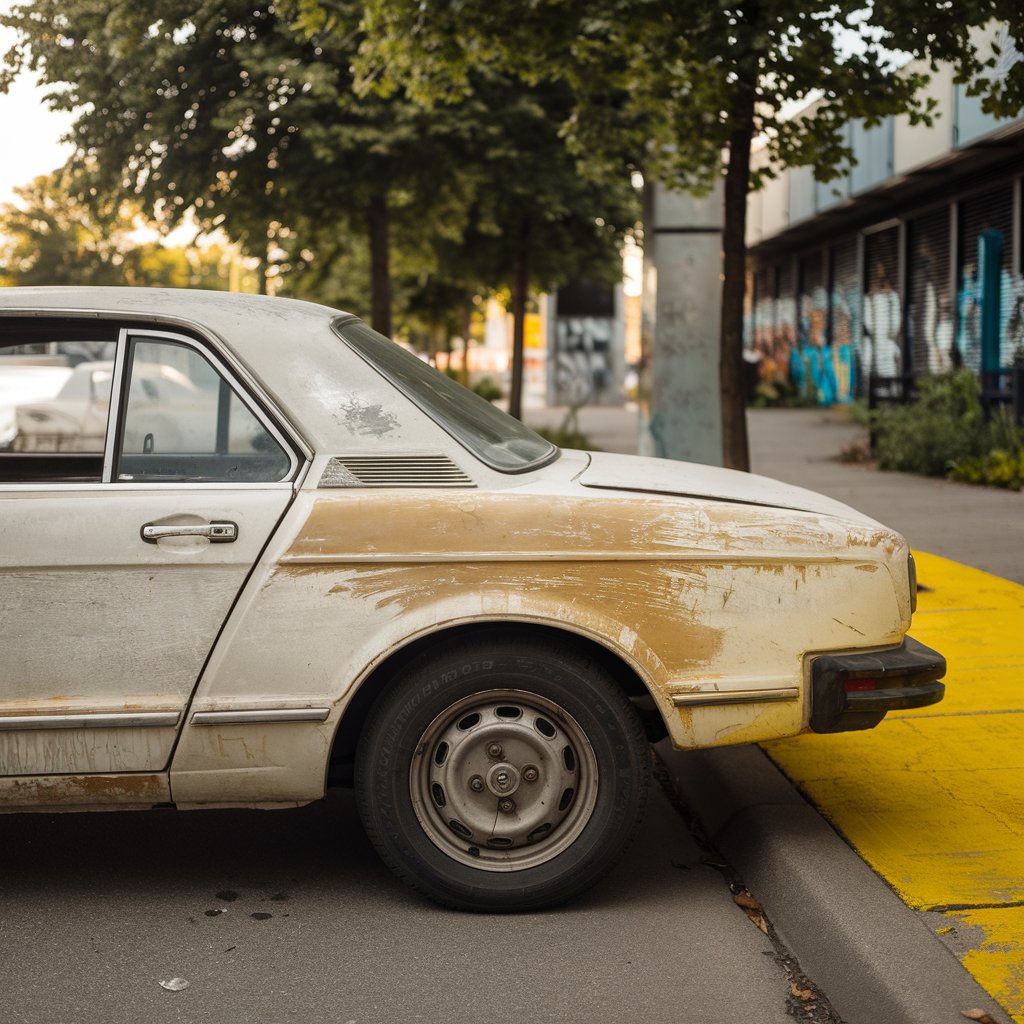
Conclusion
In summary, the yellowing of paint protection film (PPF) is a common issue caused by factors such as UV exposure and environmental contaminants. While preventive measures like applying ceramic coatings can mitigate this, regular inspection is vital for early detection. To maintain the aesthetic and protective qualities of PPF, it is essential to follow best practices for care and maintenance. If yellowing occurs, replacing the affected film is often the most effective solution, ensuring continued protection and appearance.



